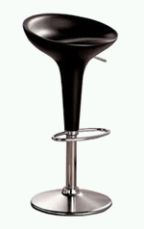The notion of strategic claim drafting, which experienced patent practitioners understand, is all about writing specific, narrowly defined claims to cover the strategically important "choke points" in a value chain.1 The rationale is that the narrowness of the claim makes it less vulnerable to a validity attack on prior art grounds. In the discussion below, I first review the recent decision in SRI International Inc. v. Cisco Systems Inc., and then I discuss how a similar strategically narrow drafting approach can be effective in diverting a § 101 attack on claims directed to software-related inventions.
In SRI International Inc. v. Cisco Systems Inc.,2 the court denied defendant's motion for summary judgment that the asserted claims of plaintiff's network security patents encompassed unpatentable subject matter, and found that the claims were not directed to an abstract idea. The patents in suit, U.S. Patent Nos. 6,711,615 (the '615 patent) and 6,484,203 (the '203 patent), relate to the monitoring and surveillance of computer networks for intrusion detection. In particular, the patents teach a computer-automated method of hierarchical event monitoring and analysis within an enterprise network that allows for real-time detection of intruders. Upon detecting any suspicious activity, the network monitors generate reports of such activity. The claims of the patents focus on methods and systems for deploying a hierarchy of network monitors that can generate and receive reports of suspicious network activity. For example, independent claims 1 and 13 of the '615 patent read as follows:
- A computer-automated method of
hierarchical event monitoring and analysis within an enterprise
network comprising:
deploying a plurality of network monitors in the enterprise network;
detecting, by the network monitors, suspicious network activity based on analysis of network traffic data selected from one or more of the following categories: {network packet data transfer commands, network packet data transfer errors, network packet data volume, network connection requests, network connection denials, error codes included in a network packet, network connection acknowledgements, and network packets indicative of well-known network-service protocols};
generating, by the monitors, reports of said suspicious activity; and
automatically receiving and integrating the reports of suspicious activity, by one or more hierarchical monitors. - An enterprise network
monitoring system comprising:
a plurality of network monitors deployed within an enterprise network, said plurality of network monitors detecting suspicious network activity based on analysis of network traffic data selected from one or more of the following categories: {network packet data transfer commands, network packet data transfer errors, network packet data volume, network connection requests, network connection denials, error codes included in a network packet, network connection acknowledgments, and network packets indicative of well-known network-service protocols};
said network monitors generating reports of said suspicious activity; and
one or more hierarchical monitors in the enterprise network, the hierarchical monitors adapted to automatically receive and integrate the reports of suspicious activity.
In the course of describing the law of patent eligibility post-Alice, Judge Robinson commented that:
Because computer software comprises a set of instructions,3 the first step of Alice is, for the most part, a given; i.e., computer-implemented patents generally involve abstract ideas. The more difficult part of the analysis is subsumed in the second step of the Alice analysis, that is, determining whether the claims "merely recite the performance of some business practice known from the pre-Internet world along with the requirement to perform it on the Internet," or whether the claims are directed to "a problem specifically arising in the realm of computer technology" and the claimed solution specifies how computer technology should be manipulated to overcome the problem. DDR Holdings, LLC v. Hotels.com, L.P., 773 F.3d 1245, 1257 (Fed. Cir. 2014).
(SRI International at 8.)
The court then observed that,
Since providing that explanation in DDR Holdings, the Federal Circuit has not preserved the validity of any other computer-implemented invention under § 101. Indeed, in reviewing post-Alice cases such as DDR and Intellectual Ventures, the court is struck by the evolution of the § 101 jurisprudence, from the complete rejection of patentability for computer programs to the almost complete acceptance of such, to the current (apparent) requirements that the patent claims in suit (1) disclose a problem "necessarily rooted in computer technology," and (2) claim a solution that (a) not only departs from the "routine and conventional" use of the technology, but (b) is sufficiently specific so as to negate the risk of pre-emption. See DDR, 773 F.3d at 1257; Intellectual Ventures, 792 F.3d at 1371. In other words, even though most of the patent claims now being challenged under § 101 would have survived such challenges if mounted at the time of issuance, these claims are now in jeopardy under the heightened specificity required by the Federal Circuit post-Alice. Moreover, it is less than clear how a § 101 inquiry that is focused through the lens of specificity can be harmonized with the roles given to other aspects of the patent law (such as enablement under § 112 and non-obviousness under § 103), especially in light of the Federal Circuit's past characterization of § 101 eligibility as a coarse gauge of the suitability of broad subject matter categories for patent protection. Research Corp. Techs., Inc. v. Microsoft Corp., 627 F.3d 859, 869 (Fed. Cir. 2010). Given the evolving state of the law, the § 101 analysis should be, and is, a difficult exercise. At their broadest, the various decisions of the Federal Circuit would likely ring the death-knell for patent protection of computer-implemented inventions, a result not clearly mandated (at least not yet). On the other hand, to recognize and articulate the requisite degree of specificity – either in the equipment used or the steps claimed – that transforms an abstract idea into patent-eligible subject matter is a challenging task. In trying to sort through the various iterations of the § 101 standard, the court looks to DDR as a benchmark; i.e., the claims (informed by the specification) must describe a problem and solution rooted in computer technology, and the solution must be (1) specific enough to preclude the risk of pre-emption, and (2) innovative enough to "override the routine and conventional" use of the computer. DDR, 773 F.3d at 1258-59.
(SRI International at 8-10, footnotes omitted.)
Alice Step 1: The court first determined whether the claims at issue are directed to a patent-ineligible concept, i.e., law of nature, natural phenomenon, or abstract idea. Cisco argued that the claims are directed to the abstract idea of "monitoring and analyzing data from multiple sources to detect broader patterns of suspicious activity," which, Cisco argued, is "a fundamental building block of intelligence gathering and network security." Cisco analogized this idea to a number of spy and security-gathering endeavors, including "networks [employed by] ancient Chinese military strategists and both sides during the Revolutionary War" and police departments using crime reports to detect "broader patterns of criminal activity." Cisco argued that humans can perform each of the steps of the method (detecting suspicious network activity, generating reports of said activity, and receiving and integrating the reports), concluding that it is a process that may be performed in the human mind or using a pen and paper, and thus it is unpatentable. SRI disagreed, pointing out that a human would need to use hardware and software in order to examine network traffic.
The court said that, although Cisco can simplify the invention enough to find a human counterpart (or argue that a human could somehow perform the steps of the method), this does not suffice to make the concept abstract. Rather, the patents address the vulnerability of computer networks' "interoperability and sophisticated integration of technology" to attack. (Id. at 12.) "The claims are, therefore, more complex than merely reciting the performance of some business practice known from the pre-Internet world along with the requirement to perform it on the Internet, and are better understood as being necessarily rooted in computer technology in order to overcome a problem specifically arising in the realm of computer networks. DDR, 773 F.3d at 1257." (Id.)
Alice Step 2: In respect to step 2 of the Alice framework, Cisco argued that the claims do not provide an inventive concept, describing the method as follows: a first step reciting conventional pre-solution activity (configuring and installing software); a generic and abstract second step (analyzing data from certain categories); non-inventive third and fourth steps (generating and receiving reports at a centralized computer); and a fifth step (combining reports to create new information). According to Cisco, the patents recite generic computers, i.e., the network monitors, which the parties agreed are software and/or hardware that can collect, analyze, and/or respond to data.
The court noted that the patents explain that "[s]election of packets can be based on different criteria" and that the claims identify particular categories of network traffic data well suited for analysis in determining whether network traffic was suspicious when used in a hierarchical system. As to the hierarchical analysis, the court said that the patents explain that the tiered collection and correlation of analysis results allow monitors to represent and profile global malicious or anomalous activity that is not visible locally. The court concluded that the claims, as an ordered combination in light of the specification, sufficiently delineate how the method is performed to improve the functioning of the computer itself, thereby providing an inventive concept. The court added that the same specificity suffices to negate the risk of disproportionately tying up the use of the underlying ideas. (Id. at 13.) The court thus denied Cisco's motion for invalidity.
Whether or not the court's decision is upheld on appeal (if it is appealed), I believe it serves as a good reminder that § 101 abstractness is inevitably an issue of claim over-breadth. I previously wrote about the use of structural claim limitations to divert Alice problems.4 The recitation of structure makes a claim narrower in scope (since different structures can generally be devised to perform a given function) and thus less abstract. Since the question of abstractness under § 101 is judged on a claim-by-claim basis, it can also be helpful to draft the claims of a patent such that no single claim is broad enough to cover all disclosed embodiments of the invention. This is contrary to the normal claim-drafting approach, i.e., a broad independent claim is drafted to cover all disclosed embodiments, and narrower dependent claims are directed to secondary, possibly inventive features. Nonetheless, this counterintuitive approach may be useful in the current legal environment, in which patents for software-related inventions are under attack. The goal, however, should be to provide a full scope of protection by ensuring that the totality of the claims covers all disclosed embodiments. The following hypothetical example is designed to elucidate this point.
Hypothetical example
Let's start with SRI's claim 1 from the '615 patent:
- A computer-automated method of
hierarchical event monitoring and analysis within an enterprise
network comprising:
deploying a plurality of network monitors in the enterprise network;
detecting, by the network monitors, suspicious network activity based on analysis of network traffic data selected from one or more of the following categories: {network packet data transfer commands, network packet data transfer errors, network packet data volume, network connection requests, network connection denials, error codes included in a network packet, network connection acknowledgments, and network packets indicative of well-known network-service protocols};
generating, by the monitors, reports of said suspicious activity; and
automatically receiving and integrating the reports of suspicious activity, by one or more hierarchical monitors.
The scope of the "detecting" step is made wider by the use of a so-called Markush group, i.e., ". . . based on analysis of network traffic data selected from one or more of the following categories: {network packet data transfer commands, network packet data transfer errors, . . .}." This breadth, which makes the claim more vulnerable to attack on § 101 grounds, could be reduced by presenting separate independent claims in which the "detecting" step of each claim recites only one of the categories of network traffic. For example, claim 1 could recite "detecting, by the network monitors, suspicious network activity based on analysis of network packet data transfer commands," and the next claim could recite "detecting, by the network monitors, suspicious network activity based on analysis of network packet data transfer errors," and so on, until all categories of network traffic data are covered.
A simpler example might be a patent directed to a seating apparatus, i.e., a stool or chair designed to rest on a surface and provide an elevated seat for the user's comfort. Let's say the application discloses the three embodiments depicted below. These include (1) a basic three-legged stool, (2) a four-legged stool with backrest, and (3) a platform stool with backrest and footrest. A single, broad claim covering these three embodiments might read as follows:
- A seating apparatus, comprising a seat and at least one leg connected to the seat and configured to support the seat in an elevated position while at least one leg is resting on a flat surface.
I could envision an examiner or court objecting that this claim 1 is ineligible as being directed to the abstract idea of a seating apparatus having an elevated seat. Now, instead of presenting such a broad and potentially abstract claim, the same scope of protection (more or less) could be obtained by presenting three separate narrower claims directed to the respective embodiments. Example claims of this type are presented below each picture. In this extremely simple example, no single one of claims 1a, 1b, or 1c could be said to create a risk "preempting" the abstract idea of a seating apparatus having an elevated seat.
| Basic three-legged stool | Four-legged stool with backrest | Platform stool with backrest and footrest |
 |
 |
 |
| 1a. A seating apparatus, comprising: a seat and at least three legs connected to said seat and configured to support the seat in an elevated position while said legs are resting on a flat surface. | 1b. A seating apparatus, comprising: a seat, a backrest attached to said seat, and at least three legs connected to said seat and configured to support the seat in an elevated position while said legs are resting on a flat surface. | 1c. A seating apparatus, comprising: a seat, a backrest attached to said seat, a leg connected to said seat and configured to support the seat in an elevated position while said leg is resting on a flat surface, and a footrest attached to said leg. |
In conclusion, the following techniques may be advantageously used in drafting claims to software-related inventions:
- Try to include structural elements beyond a generic computer or processor. For example, in appropriate cases, specific code structures5 and data structures6 could be recited.
- Try to define the problem addressed by the invention broadly, but claim the specific solutions/embodiments narrowly, as discussed above.
Unless the Supreme Court favorably clarifies its Alice (and Myriad) opinion(s), or Congress saves the day by amending or eliminating § 101 from the patent laws, practitioners should continue to explore ways to achieve an adequate scope of patent protection while avoiding the post-Alice abstract idea exception.
Footnotes
[1] I've heard this explained using the metaphor of controlling the Strait of Hormuz instead of trying to build a fence around the Persian Gulf.
[2] SRI International Inc. v. Cisco Systems Inc., 1-13-cv-01534 (D. Del. April 11, 2016, Order) (Robinson, J.).
[3] In footnote 5, the court additionally commented that software generally comprises a method of organizing human activity, citing Intellectual Ventures I LLC v. Capital One Bank (USA), 792 F.3d 1363, 1367-68 (Fed. Cir. 2015) (citing Alice, 134 S. Ct. 2351-52, and Bilski II, 561 U.S. at 599).
[4] See " How Structural Claim Limitations Can Save Software Patents."
[5] e.g., control structures, subroutines, blocks.
[6] e.g., linear data structures, trees, hashes, graphs.
The content of this article is intended to provide a general guide to the subject matter. Specialist advice should be sought about your specific circumstances.

